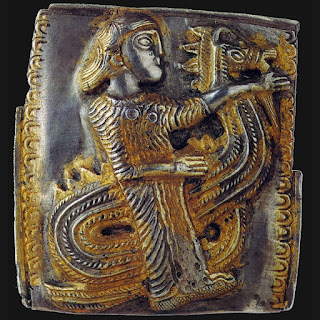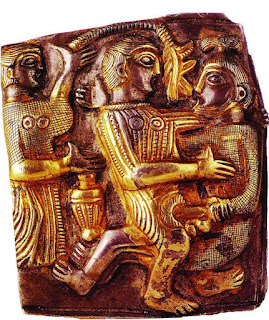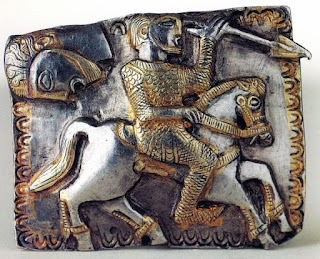In the summer of 1963, near the village of Letnitsa in Lovech, Bulgaria, archaeologists made a remarkable discovery that would offer a profound glimpse into the opulent and spiritually rich world of the ancient Thracians. This extraordinary find, now known as the Letnitsa Treasure, dates back to circa 400-300 BC and consists of 17 gilded silver applications from horse ammunition, as well as a bronze bridle. These exquisite artifacts are adorned with intricate images that vividly depict scenes from Thracian mythology, highlighting the deep connection between the Thracian rulers and their deities.
The Discovery and Its Significance
The Letnitsa Treasure was unearthed in a burial site, a testament to the craftsmanship and religious fervor of the Thracian civilization. The treasure includes 17 beautifully crafted silver applications and a bronze bridle, all of which would have adorned the horses of the Thracian elite. These items were not mere decorations; they were symbols of power and piety, intricately linked to the mythology and spiritual beliefs of the Thracians.

Thracian Mythology and the Sacred Marriage
Among the various scenes depicted on these silver applications, one of the most compelling is a vivid portrayal of hierogamy, or sacred marriage. This scene illustrates the union of the Thracian ruler, seen as the earthly embodiment of a deity, with the Great Mother Goddess, who personifies the state and symbolizes the earth. This sacred marriage was believed to ensure the ruler’s divine right to govern the land, reaffirming his authority and the fertility of the earth.
The imagery of the hierogamy scene is rich with symbolic meaning. The Great Mother Goddess, a central figure in Thracian mythology, was revered as the source of life and fertility. Her union with the king not only legitimized his rule but also ensured the prosperity and well-being of the kingdom. This sacred bond between the ruler and the goddess was a powerful affirmation of the Thracian belief in the divine right of kings and the sanctity of their relationship with the gods.

Artistic and Cultural Insights
The craftsmanship of the gilded silver applications is a testament to the advanced metallurgical skills of the Thracians. Each piece is adorned with intricate designs that reflect the high level of artistry achieved by these ancient people. The detailed depictions of mythological scenes provide invaluable insights into the cultural and religious life of the Thracians, revealing their reverence for the divine and the symbolic significance they placed on their rulers.
The bronze bridle, while simpler in design compared to the silver applications, is no less significant. It highlights the importance of horses in Thracian society, not only as a means of transportation and warfare but also as symbols of status and power. The inclusion of the bridle in the treasure underscores the integral role that horses played in the lives of the Thracian elite.

A Legacy Unearthed
The Letnitsa Treasure offers a rare and precious glimpse into the spiritual and cultural world of the ancient Thracians. The vivid scenes of hierogamy and other mythological depictions carved into the gilded silver applications serve as a window into the past, revealing the deep connection between the Thracian rulers and their deities. These artifacts, now preserved and studied, continue to captivate and inspire, reminding us of the rich heritage and enduring mysteries of ancient civilizations.
As we continue to explore and understand the Letnitsa Treasure, we gain not only a deeper appreciation for Thracian art and mythology but also a greater understanding of the complex interplay between power, religion, and culture in ancient societies. This remarkable discovery stands as a testament to the ingenuity and spiritual depth of the Thracians, whose legacy continues to resonate through the ages.
